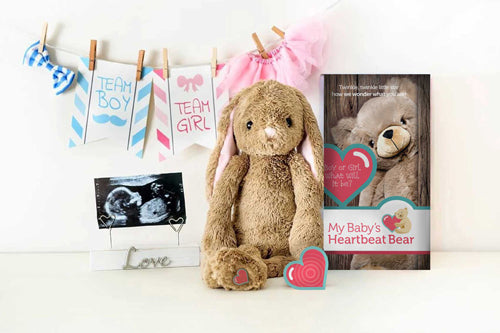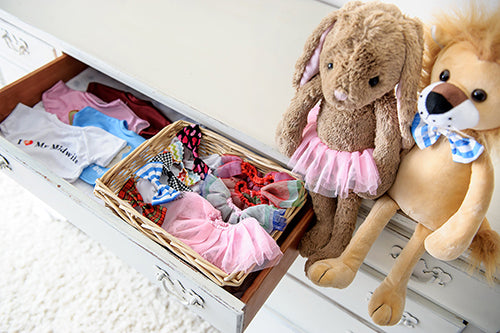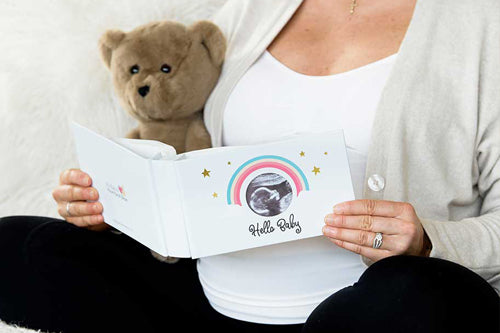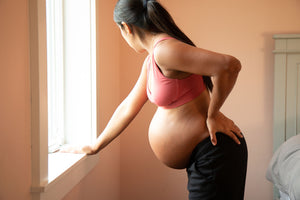Preeclampsia: The Signs & Symptoms

Preeclampsia is the largest known cause of premature birth in the US.
Preeclampsia is a condition that can occur during any woman's pregnancy.
Science has yet to pinpoint an exact cause, but many researchers feel as though it can be prevented by following certain protocols while pregnant. That being said, it is not a guarantee. Doing everything right may help lower chances of dealing with this complication, but you need to know the signs and symptoms -- just in case.
Preeclampsia can occur in conjunction with HELLP, or if left untreated, can turn into Eclampsia, a serious condition including seizures that can put mom and her unborn baby at risk, and in rare cases, cause death.
There is absolutely no reason to ignore any signs, as this can lead to very severe consequences. According to the March of Dimes, the signs and symptoms of preeclampsia include:
- High blood pressure
- Protein in the urine
- Severe headaches
- Vision problems, like blurriness, flashing lights, or being sensitive to light
- Pain in the upper right belly area
- Nausea or vomiting
- Dizziness
- Sudden weight gain (2 to 5 pounds in a week)
- Swelling in the legs, hands, and face
- Feeling tired or “under the weather”
If you or your partner (or a friend who sees you often) notices swelling, immediately take your blood pressure. There are blood pressure machines at every pharmacy on every street corner. This swelling may not be extreme, but enough to be noticed. Perhaps your ankles and legs are puffier, or your face looks rounder overnight. It is easy to blame this on pregnancy and weight gain, but the truth is that you need to rule out an underlying condition.
Preeclampsia is typically a rapidly progressing condition, which is why when an expecting woman’s blood pressure is higher than what her normal has been during the pregnancy, the care providers tend to start monitoring closely. Preeclampsia usually appears during the second half of pregnancy, typically past the 26th week of gestation or into the third trimester, although it can occur earlier. It may also occur during delivery or early postpartum. It is estimated to affect between 5-8% of pregnancies. It can be very dangerous and it along with some related disorders are responsible for about 76,000 maternal deaths and 500,000 infant deaths per year. It is not something to mess around with.
While studies have yet to discover the exact cause, they have identified risk factors for preeclampsia:
It is important to know that it is also possible to have these risk factors and not develop preeclampsia.- Preeclampsia is most common in the first pregnancy. Meaning, if you did not have it with your first pregnancy, your chances drop drastically of ever experiencing it.
- Women with one long-term partner are less at risk than women with new or multiple partners.
- History of chronic high blood pressure, diabetes or kidney disorder
- Multiple gestation (twins, triplets, etc)
- Polycystic Ovarian Syndrome (PCOS)
- Family history of the disorder (a mother, sister, grandmother who experienced preeclampsia during pregnancy)
- Being overweight: Women with greater than 30% Body Mass Index (BMI)
- Being under the age of 18 or over 40 years old
- Autoimmune disorders such as Lyme, rheumatoid arthritis, lupus sarcoidosis or MS.
- Previous history of preeclampsia, particularly if onset is before the third trimester. Basically, the more severe and the earlier you developed preeclampsia in a previous pregnancy, the higher risk you have of developing it in future pregnancies.
If Preeclampsia is Suspected
If you or your doctor suspects preeclampsia is beginning, monitoring should be done. This does not mean that you need to be admitted and give birth immediately, although in some situations that is the best outcome. Your birth team may be able to help your body better handle the pregnancy with a controlled diet, exercise, and rest protocol. There are many other natural options to aid stopping preeclampsia from worsening, helping the pregnancy reach further gestation. However, at a certain point, your birth team should intervene. Often, women are given magnesium sulfate to prevent severe preeclampsia from worsening. While this option may prolong the pregnancy to have time to administer steroids to strengthen the lungs of the baby, there are several possible risks to magnesium sulfate.
Risks for Mother:
- Nausea
- Vomiting
- Palpitations
- Headache
- General muscle weakness
- Lethargy
- Constipation
- Cardiac arrest
- Pulmonary edema (lungs fill with fluid; can be fatal)
- Chest pain
- Cardiac conduction defects
- Low blood pressure
- Low calcium
- Increased urinary calcium
- Visual disturbances
- Decreased bone density
- Respiratory depression (difficulty breathing)
- Muscular hyperexcitability
- Hypocalcemia
- Hypercalcemia
- Motor depression
- Decreased muscle tone and drowsiness
- Respiratory depression
- Meconium ileus
- Long bone demineralization
- Congenital rickets
- Radiographic bone changes
- Neuromuscular blockade with gentamicin
- Marked hypotension with nifedipine
The Best Option
The best option is the one that results with a healthy mother and a healthy baby. The next best option is to not suffer from preeclampsia at all. While there is not a known cause, there are plenty of ways to help prevent it. It’s worth trying everything.
NOTE: For those of you who live North of the equator and are entering a season of hot and humid weather and increased outdoor activity, please be aware that extra loss of salt (through sweat) and extra burning of calories can trigger a rising BP, and other pre-eclampsia symptoms.
Stories
“I went to my 37 week appointment, slightly swollen, but not expecting any bad news as I had been swollen the last few weeks without and problems. That day though I Had high bp and protein in urine so I was sent right to the hospital to be checked by the on-call Doctor. My goal was a natural labor so I really wanted to get out of there ASAP, and my doctor was understanding but all signs pointed to preeclamsia, so admitted I was. She still hoped I'd be released after they monitored my protein levels for 24 hours, but unfortunately, I started showing signs of HELLP syndrome that is often associated with preeclamsia, so I was not able to be released. I was very disappointed but knew I could still somewhat fulfill my delivery wishes. Although I was induced and it was a much longer process than I had hoped for, I ended with a natural delivery and a healthy baby boy. -Jes
6 weeks early- 34 weeks even-Preeclampsia and HELLP syndrome. This is the first time holding him 24hrs after he was born- I was in rough shape and on magnesium sulfate- I was at risk of having a stroke and my kidneys were shutting down- no choice other than to deliver via emergency c section to save us both- he was in the nicu for 14 days and I had no choice but to be strong for the both us -- not the experience I had hoped for with my 1st baby but he is a healthy 6yr old now! -Andrea
Featured Articles
Christmas Gift Ideas for New Moms (or moms-to-be)
Experience Gifts and How to Wrap Them
The One Item You Need for Your Winter Baby





















